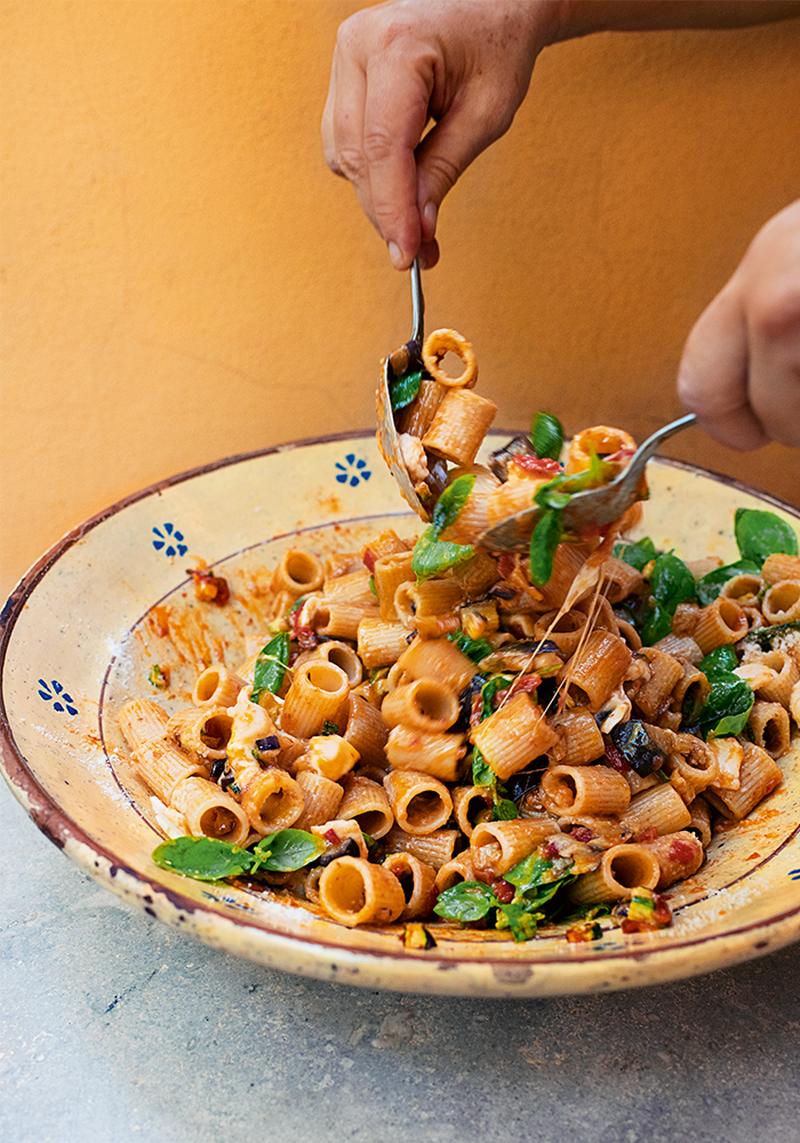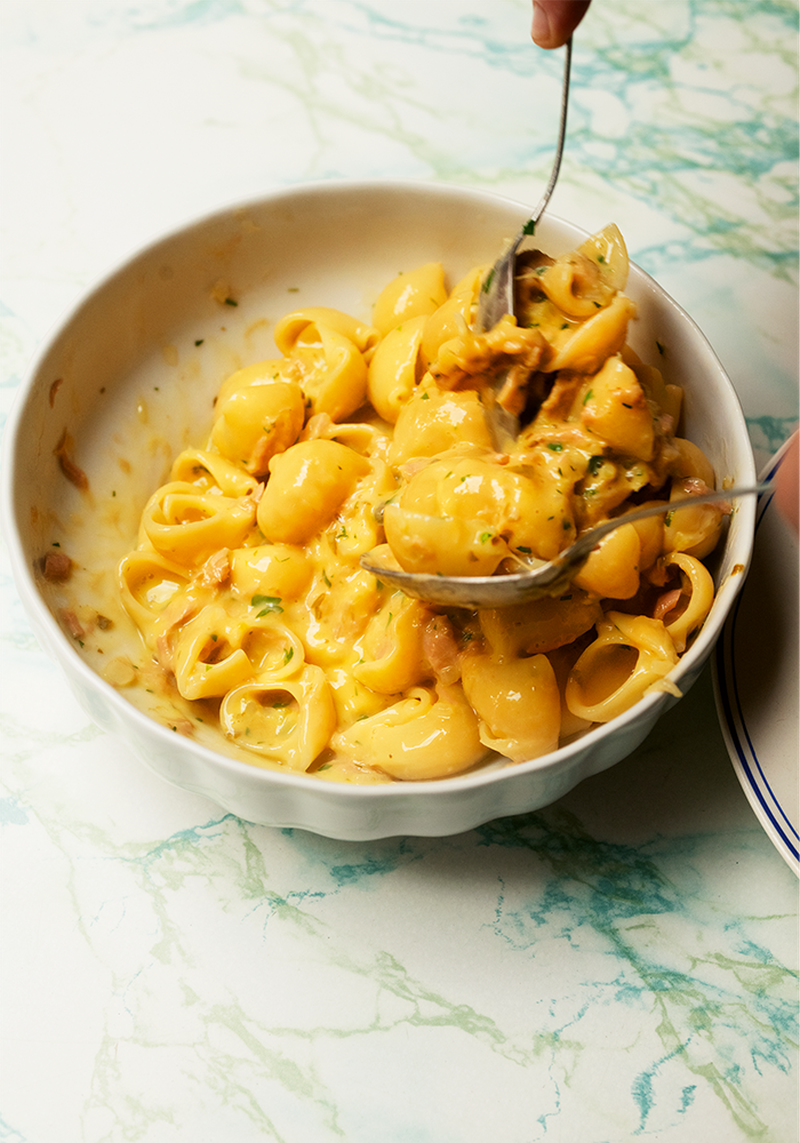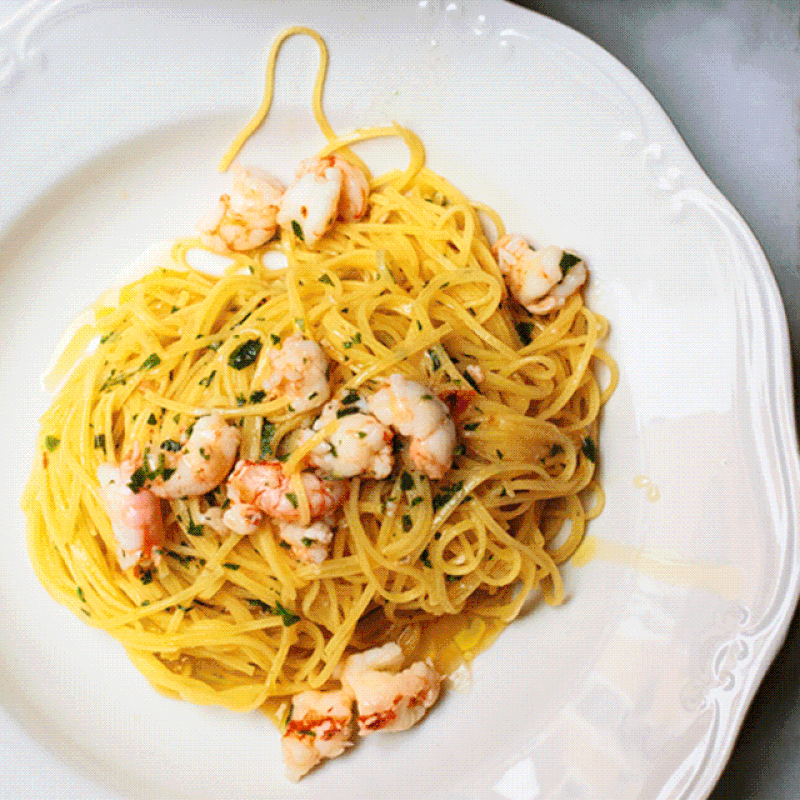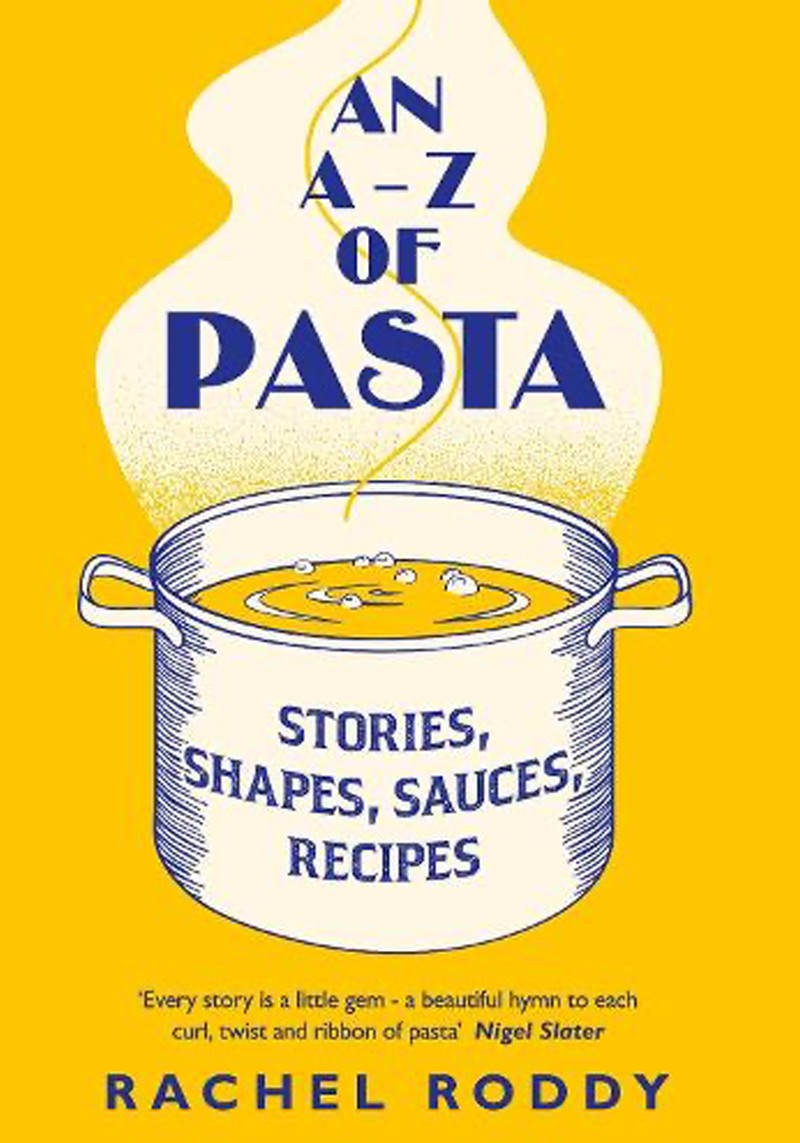3 Easy Summer Pasta Recipes To Try Now
Every day, millions of us do the same thing. We take a packet of pasta from the shelf, we tip the shapes into boiling water and we make something to eat.
For Italians, pasta is more than just a food, it is a symbol, a flag, a way of life and culture. I am neither Italian, a scholar, or a chef. However, I have, as a food writer and home-cook living in Italy and surrounded by good teachers, spent the last 16 years in Rome learning about, cooking and eating pasta.
Allocating sauces to shapes is a minefield, as most sauces are polygamists, pairing beautifully with lots of shapes. But here are some suggestions for much-loved packets:
Fusilli
Lamb ragù
Broccoli with anchovy crumbs
Sardines with fennel and anchovy crumbs
Linguine
Courgettes, egg and parmesan
Pesto alla genovese
Leeks, cream and saffron
Macaroni
Macaroni cheese
Peas, bacon and ricotta
Baked macaroni with meatballs and aubergine
Penne
Arrabbiata – tomato and lots of red chilli
Sausage, porcini mushrooms and leeks
Norma – tomato, aubergine and salted ricotta
Spaghetti
Simple tomato and basil sauce
Puttanesca
Carbonara – egg, guanciale and pecorino
Fancy making your own pasta? Here’s how to make a basic flour and water dough…
This is the mothership recipe for a hard wheat flour and water dough, suitable for all flour and water pasta recipes, such as pici and orecchiette. The first time you try this, treat it as a game, notice how the coarse semola and water comes together, how dry and scraggy it feels to begin with, then how it softens as you knead. Weather, humidity, the flour, how dry your hands are, all play a huge part in this; the first step is to start to notice. Also identify your work-spot, keeping in mind you need a kneading area (wood is ideal because the surface friction does some of the work) and a spot to spread the shapes once you have made them. The proportions are 2:1, so for every 100g of semola, 50ml of warm water.
To make pasta for four, you need 400g of semola and 200ml of warm water. Working on wood is best as it creates heat and friction, but you can also work in a bowl, or in a food processor. Working on a board, tip the semola into a wide mountain and add the water bit by bit, pinching it into the flour so it doesn’t run away. Once you have added all the water, bring it into a rough ball, then knead, in the most comfortable way for you (I use the heel of my hand to fold the dough over itself and then push and rotate). Avoid adding extra water until you have kneaded for a while. If still it feels dry or flaky after 2 minutes, a few drops or light spray of water on the board may well be enough.
Knead for at least 6 minutes, or until the dough is smooth and silky – when you hold it against your cheek, it should feel lovely. Rest under an upturned bowl for 30 minutes before shaping according to the recipe.
Inspired? Here are three of Rachel’s recipes to try at home…

Fresh Capelli D’angelo With Prawns & Lemon
This recipe is inspired by a dish served at an elegant fish restaurant called Chalet Galileo, whose windows open onto an almost white beach in Civitanova in the region of Le Marche. Prawns cooked swiftly in olive oil, with white wine and scented with lemon zest, are netted for the second time in fresh egg pasta. Cooking times for the prawns and the pasta are brief, so the dish comes together incredibly quickly. A bright, swift tangle of a supper.
Bring a large pan of water to the boil for the pasta.
In a large frying pan, warm the oil, garlic and chilli gently to infuse the oil. Add the prawns, stir, then raise the heat, add the wine and a pinch of salt and allow to bubble for 3 minutes while you cook the pasta – which will only take a minute or so.
Drain the pasta, or lift directly into the prawn pan, add the lemon zest and parsley, then toss for the last time, and serve.

Midsummer Pasta
This has become a summer favourite, especially if we are a big group. The beauty is that the heat of the pasta and vegetables melts and softens the edges of the mozzarella and parmesan, which unites everything. You can roast the vegetables, but frying them is best. You could do this in advance, but they will need warming through in the oven before you mix everything together. Use loads of basil – the scent should fill the entire room.
Bring a large pan of water to the boil for the pasta.
Pour enough oil into a deep, medium-sized frying pan for it to come 2.5cm up the sides and heat until hot. Working in batches, fry the diced vegetables in the oil until soft and golden, then blot on a kitchen towel, season with salt and keep warm.
Tip the oil from the pan.
Plunge the tomatoes into the almost boiling water for a minute, then lift them out with a slotted spoon and refresh under cold water, at which point the skins should slip off.
Roughly chop the tomatoes.
Put the frying pan back on the heat with 4 tbsp of new oil and the garlic.
Once the garlic is fragrant, add the chopped tomatoes and a pinch of salt and cook until soft and saucy – about 10 minutes.
Once the water is boiling, add salt, stir, then add the pasta and cook until al dente.
Once the pasta is ready, drain, tip into the tomato pan and toss.
Tip the pasta and sauce into a large bowl, add the fried vegetables, parmesan, mozzarella and ripped basil, toss thoroughly and serve.

Lumache With Tuna, Egg & Capers
If you are familiar with vitello tonnato, then that will give you some idea of this tuna sauce enriched with egg yolks which clings to the shells, and also shines. The recipe is an adaption of one by Lisa Biondi, a prolific recipe writer and author of numerous stylish and trend setting books in the 60s and 70s, who turned out to be the entirely fictional creation of a publishing house.
Bring a large pan of water to the boil for the pasta.
Peel and dice the onion. Trim the celery to the palest bit, pull away any strings and dice that too.
Put the onion and celery into a frying pan with the olive oil and a pinch of salt and then on to a medium-low flame and cook until soft, which will take a while.
Add the flaked tuna and capers, stir a minute, then add the wine and allow to bubble for 10 minutes, adding 3 tbsp of lemon juice and some zest in the last minutes. It should be saucy – if it is watery, cook a bit longer.
Meanwhile cook the pasta until al dente, drain and tip into a warm serving bowl, tip the sauce on top, toss quickly, then add the yolk, toss again and serve.
An A-Z of Pasta: Stories, Shapes & Sauces by Rachel Roddy is available to buy now.
Visit Waterstones.com
DISCLAIMER: We endeavour to always credit the correct original source of every image we use. If you think a credit may be incorrect, please contact us at info@sheerluxe.com.



